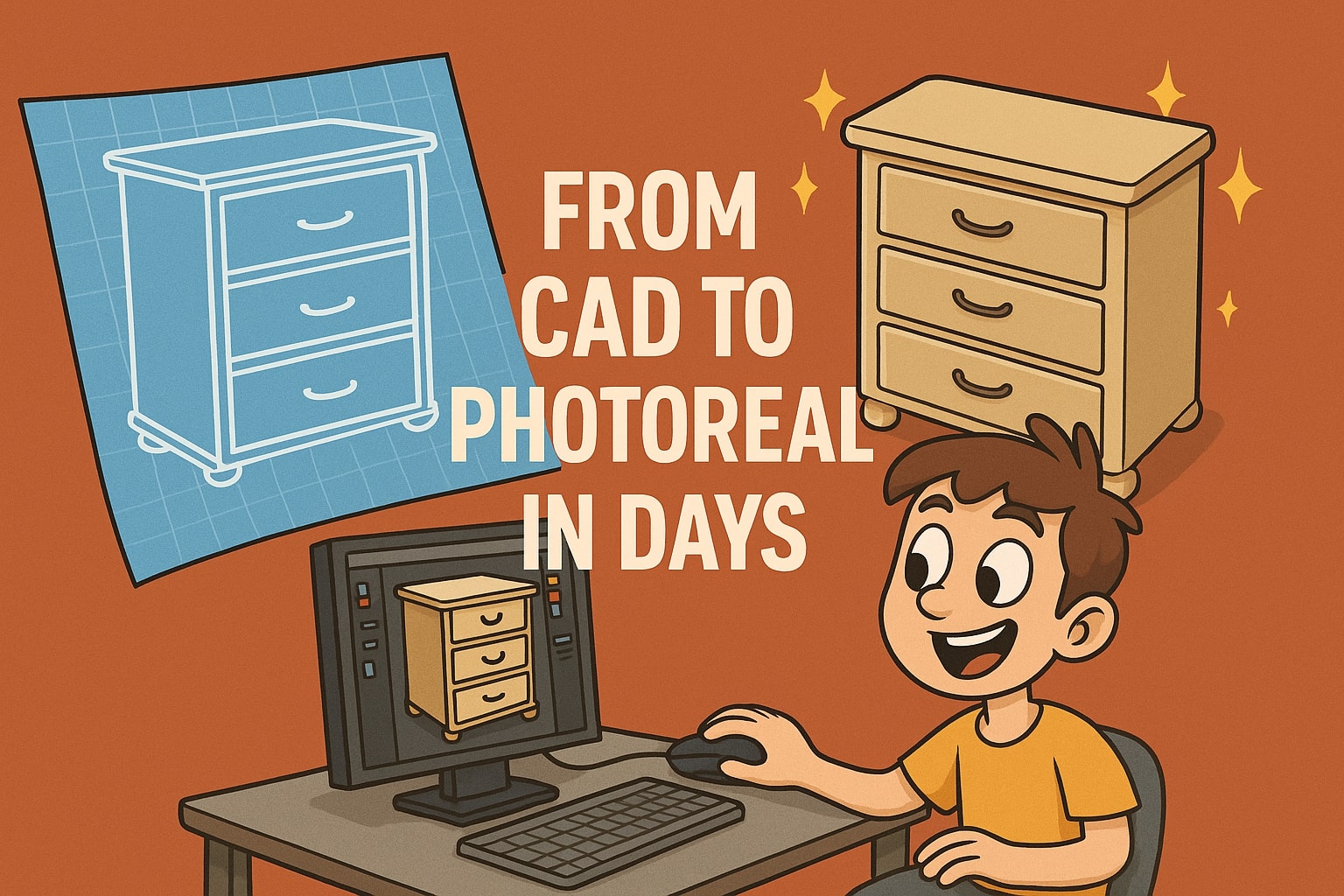1) Inputs: what we need to start fast
- CAD or drawings: STEP, IGES, or native. Layers named by part is ideal.
- Finish references: photos or chips for color, gloss, and texture scale.
- Angles and usage: where the images live, web sizes, print needs, marketplace rules.
- Brand constraints: camera height, focal length, background rules, shadow style.
2) Geometry prep and topology cleanup
We import with unit checks, weld seams where needed, and remove internal parts that never render. Small fillets are preserved, since micro bevels catch light and make hard surfaces feel real. We generate UVs only where decals or triplanar materials are not sufficient.
Clean import
- Unit scale verified at import
- Normals and smoothing groups fixed
- Hidden hardware culled when safe
- Decal islands reserved for labels
Ready to render
- Grouped by material and finish
- Tiny bevels added where missing
- Non-manifold geometry repaired
- Pivot and world alignment locked
3) Look development that matches reality
Photoreal comes from correct values, not heavy post. Metals use measured IOR and roughness, plastics get subtle normal and cavity detail, wood gets calibrated color and gloss by species. We match your references under a neutral lighting rig before moving to the final scene.
4) Lighting and cameras for consistency
- HDRI + key fill: neutral studio with a directional key that defines form.
- Shadow language: gentle contact shadow for e-commerce, longer falloff for lifestyle.
- Cameras: fixed height and focal length that match brand guidelines.
5) Render strategy for speed
We render a master angle set in batches, then run variants by material overrides. Render passes include beauty, shadow, reflection, and object IDs, so we can isolate parts without re-rendering. Denoising is applied carefully, keeping edge detail intact.
Turnaround
First draft angles in 2 to 4 days for a typical product.
Variants
Colors and hardware swapped in minutes once the master scene is set.
Consistency
Lighting and camera templates shared across your full range.
6) QA and color confidence
We compare renders to your reference photography or material boards, checking gloss, edge highlights, and texture scale. A small photo of a real part in neutral light is often enough to nail the last 5 percent.
What you receive
- Packshots: transparent PNG or WebP at required sizes.
- Lifestyle scenes: on-brand environments that match audience and price point.
- 360 or turntables: ready for PDP scripts and showrooms.
- Master scene: your calibrated lighting rig and camera set for future launches.
Want to test this on a hero product?
Send CAD, two finishes, and your preferred angles. We will deliver a small set that you can compare with studio photos and use right away on your site.
Start a CAD → photoreal trial